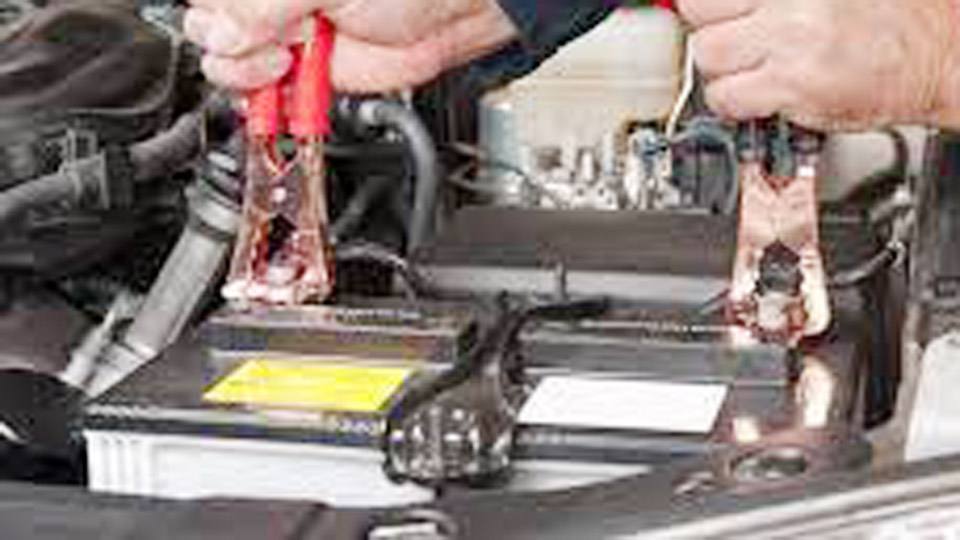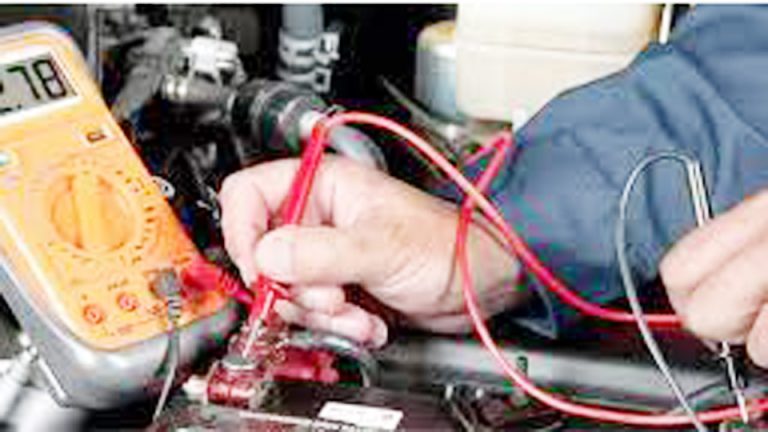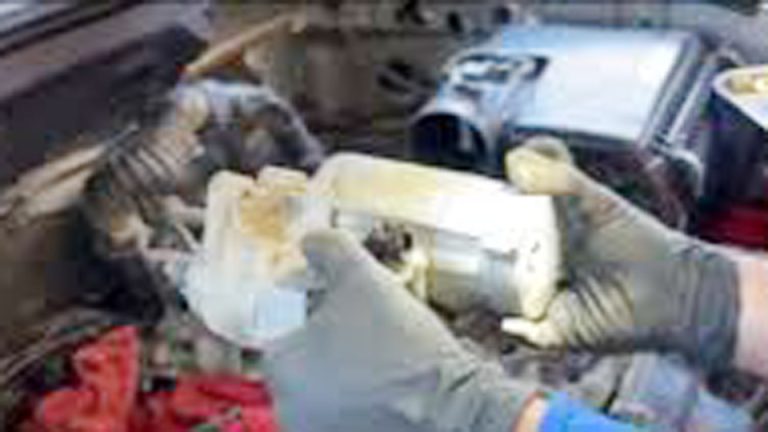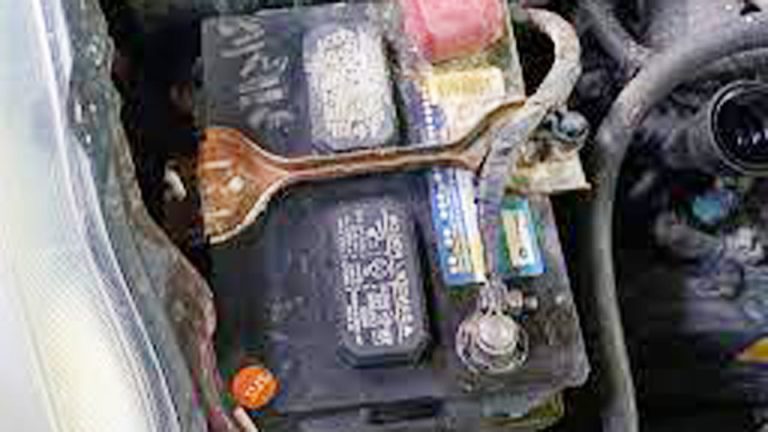A while back, I was stuck in a frustrating cycle—I’d replace the battery (Motor Drain battery), the car would run fine for a few days, and then suddenly, it’d be dead again. I checked the lights, the alternator, even unplugged aftermarket accessories… but nothing fixed the problem.
Finally, after digging deeper and talking with a mechanic friend, I discovered something I hadn’t even considered: the starter motor itself was draining my battery.
I didn’t believe it at first—how could a part that only runs for a few seconds be the issue? But after testing it and seeing the slow draw firsthand, it all made sense. A faulty or shorted starter can absolutely drain your battery, even when the car’s off.

Image by reliable-auto
I’ll share my personal experience with this sneaky issue, explain how and why a starter motor can cause a drain, and show you what signs to look for before your next battery ends up dead in the driveway.
What Does a Starter Motor Do?
Before we dive into whether a starter motor can drain your battery, let’s talk about what it does. The starter motor is like the kickstarter on a motorcycle—it gets your engine going. It’s a small electric motor that uses power from your car’s battery to spin the crankshaft, which moves the pistons and starts the combustion process.
When you turn the key (or push the start button), the starter’s solenoid—a magnetic switch—pushes a gear into the engine’s flywheel, and the motor cranks the engine to life. Once the engine’s running, the starter shuts off, and the alternator takes over to keep the battery charged.
I remember the first time I pulled a starter motor from my old Honda Civic. It was this heavy, cylindrical thing, and I couldn’t believe how much power it packed for such a small part. But when it goes bad, it can cause all sorts of trouble, including draining your battery.
How a Starter Motor Can Drain a Car Battery
So, can a starter motor drain a car battery? Absolutely, and I’ve seen it happen more times than I can count. A faulty starter can sap your battery’s power in a few ways, depending on what’s gone wrong. Here’s how it typically plays out:
Stuck Solenoid: If the solenoid gets stuck in the “on” position, it keeps the starter motor engaged even after the engine starts. This draws a ton of power from the battery, draining it fast. I once worked on a friend’s Toyota Corolla where the solenoid was stuck, and the battery was dead in a day.
Short Circuit in the Motor: A short in the starter’s wiring or windings can create a constant electrical draw, even when the car’s off. This is like leaving your headlights on overnight—it’ll kill the battery.
Worn Brushes or Bearings: If the starter’s internal brushes or bearings are worn, it might struggle to crank the engine, pulling more power than normal from the battery and draining it over time.
Intermittent Engagement: Sometimes, the starter tries to engage repeatedly without fully cranking, drawing power each time. This can slowly deplete the battery, especially if you’re trying to start the car multiple times.
I had a neighbor whose Chevy Malibu kept dying overnight. At first, we thought he’d left the dome light on, but after checking, I found the starter’s solenoid was sticking, pulling power even when the car was off. A quick fix saved his battery and his wallet.
Other Culprits That Might Drain Your Battery
Before you blame the starter, it’s worth checking other things that could be draining your battery. I’ve learned the hard way that jumping to conclusions can lead to unnecessary repairs. Here are some common culprits I always check:
Weak or Old Battery: Batteries only last 3–5 years. If yours is old, it might not hold a charge, even with a good starter.
Alternator Issues: The alternator charges the battery while you drive. If it’s failing, the battery won’t recharge, making it seem like the starter’s the problem.
Parasitic Drain: Things like a glovebox light staying on, a faulty radio, or a stuck relay can slowly drain the battery when the car’s off.
Corroded Connections: Dirty or loose battery terminals can prevent proper charging or power delivery to the starter.
I once spent an hour troubleshooting a dead battery on my buddy’s Ford F-150, only to find a loose battery cable was the issue. A quick tighten, and the problem was gone. Always check the simple stuff first.
Diagnosing a Battery Drain Caused by the Starter
To figure out if the starter’s draining your battery, you need to do some detective work. Here’s how I approach it, step by step, based on years of fixing cars:
Check the Battery Voltage
Start with the battery. Use a multimeter to check its voltage with the car off—it should read around 12.6 volts for a fully charged battery. If it’s below 12 volts, charge it fully or jump-start the car and test again. If the battery keeps dying, the starter might be the issue.
Listen for Starter Sounds
Turn the key and listen. If you hear a single click, the solenoid’s engaging, but the motor might not be turning. Rapid clicking usually means a weak battery, not a bad starter. No sound at all could point to a solenoid or wiring issue. I diagnosed a stuck solenoid on a Nissan Altima this way—it was clicking even with the key out.
Test for Parasitic Drain
A parasitic drain is when something pulls power when the car’s off. Here’s how I test it:
- Disconnect the negative battery cable.
- Set your multimeter to DC amps and connect it between the negative terminal and the cable.
- A normal reading is under 50 milliamps (0.05 amps). If it’s higher, something’s draining the battery.
- Remove fuses one by one to isolate the drain. If pulling the starter relay fuse stops the drain, the starter’s likely the problem.
I used this trick on a Dodge Ram and found the starter was pulling 2 amps when it shouldn’t. Cleaning the solenoid fixed it.
Inspect the Starter’s Connections
Loose or corroded wires at the starter can cause it to draw too much power. Check the positive and negative cables at the starter (usually near the engine’s bottom). Clean any corrosion with a wire brush and tighten loose connections. I fixed a battery drain on a Toyota Tacoma this way—the starter cable was loose and causing intermittent issues.
Tap the Starter
If the starter’s solenoid or brushes are sticking, a gentle tap can sometimes free them up. Use a screwdriver handle to tap the starter (a cylindrical metal piece near the transmission) while someone turns the key.
If it starts, the starter’s likely faulty and could be draining the battery. I got my sister’s Hyundai Elantra going this way, but it needed a new starter soon after.
Fixing a Starter-Related Battery Drain
If you’ve confirmed the starter’s draining the battery, you might be able to fix it without replacing the whole unit. Here are some repairs I’ve done that worked:
Clean the Starter’s Connections
Corrosion or loose wires can cause the starter to draw too much power. Disconnect the battery, then clean the starter’s terminals with a wire brush or sandpaper. Use electrical contact cleaner for stubborn grime. Tighten all connections with a wrench. I fixed a battery drain on a friend’s Honda Accord this way—it was a 20-minute job that cost nothing.
Rebuild the Solenoid
A stuck solenoid can keep the starter engaged, draining the battery. Here’s how I rebuild one:
- Remove the starter (usually 2–3 bolts and a few wires).
- Detach the solenoid (a smaller cylinder on the starter).
- Open it and clean the plunger and contacts with sandpaper.
- Test the solenoid’s coil with a multimeter for continuity. If it’s bad, replace it ($20–$50).
- Reassemble and reinstall.
I did this on my old Civic’s starter, and it stopped the battery drain for another year.
Replace Worn Brushes
Worn brushes can cause the starter to pull excessive power. Remove the starter, open the motor’s end cap, and check the brushes (small carbon blocks). If they’re shorter than 1/4 inch, replace them ($10–$30). I swapped brushes on a Toyota Camry’s starter, and it fixed the drain and cranking issues.
Check for Short Circuits
If the starter’s windings are shorted, it’ll drain the battery even when off. Use a multimeter to test for continuity between the starter’s positive terminal and ground. If there’s a short, you’ll need to replace the starter. I found a short in a Chevy Malibu’s starter, and replacement was the only fix.
When to Replace the Starter
Sometimes, the starter’s too far gone to save. If the windings are burnt, the gears are stripped, or the solenoid’s completely dead, a new starter is the way to go. I tried fixing a starter on a high-mileage Ford Focus, but it was fried beyond repair. A remanufactured starter cost $100, and it was worth it for the reliability.
Here’s a table to help you decide:
| Issue | Can It Drain Battery? | Fixable Without Replacement? | Cost to Fix |
|---|---|---|---|
| Stuck solenoid | Yes | Often (clean/rebuild) | $0–$50 |
| Worn brushes | Yes | Usually (replace brushes) | $10–$30 |
| Corroded connections | Yes | Yes (clean/tighten) | $0–$10 |
| Shorted windings | Yes | No (replace starter) | $75–$500 |
| Faulty relay | Yes | Yes (replace relay) | $10–$20 |
Costs of Fixing vs. Replacing
Fixing a starter-related battery drain is usually cheap if you do it yourself. Here’s what I’ve spent on similar jobs:
| Fix | Cost (Approx.) | Time Needed |
|---|---|---|
| Clean connections | $0–$10 (brush, cleaner) | 30 minutes |
| Rebuild solenoid | $0–$50 (parts) | 1–2 hours |
| Replace brushes | $10–$30 | 1–2 hours |
| Replace relay | $10–$20 | 15 minutes |
| New starter (DIY) | $75–$500 | 2–4 hours |
| New starter (shop) | $400–$1,000 | 1–4 hours |
I saved $400 by cleaning connections on a friend’s Tacoma instead of replacing the starter. A shop would’ve charged $600 for the same job.
Battery Maintenance to Prevent Drains
A healthy battery can handle a struggling starter better. Here’s how I keep my car’s battery in top shape:
- Test Regularly: Check voltage every couple of years. A new battery costs $100–$200, cheaper than repeated towing.
- Clean Terminals: Scrub corrosion off with a wire brush during oil changes.
- Drive Longer: Short trips don’t let the alternator fully charge the battery. Take a 20-minute drive weekly.
- Check the Alternator: If it’s not charging (13.5–14.5 volts when running), fix it before it kills the battery.
I learned this after my F-150’s battery kept dying. A new alternator fixed the issue, and the starter was fine.
Practical Tips to Avoid Starter-Related Battery Drains
Want to keep your battery and starter happy? Here’s what I’ve learned from years of car repairs:
- Check for Drains Early: If your battery dies overnight, test for parasitic drain before it becomes a habit.
- Maintain Connections: Clean and tighten battery and starter cables regularly to prevent power loss.
- Listen for Warning Signs: Clicking or slow cranking means trouble’s brewing. Don’t wait for a dead battery.
- Avoid Short Trips: Constant starting wears out both the battery and starter. Combine errands when possible.
- Use Quality Parts: If you replace brushes or a solenoid, go for reputable brands. Cheap parts fail fast, and I’ve been burned before.
I always tell my friends to treat their car’s electrical system like a good friend—check in regularly, and it’ll stick around longer.
Keep Your Battery Charged and Your Car Running
So, can a starter motor drain a car battery? You bet it can, whether it’s a stuck solenoid, worn brushes, or a short circuit pulling power when the car’s off. But with a little detective work, some basic tools, and the tricks I’ve shared, you can often pinpoint the issue and fix it without breaking the bank.
As someone who’s spent countless hours under the hood, I love helping folks avoid a tow truck and get their cars running again. By staying proactive with maintenance and catching problems early, you’ll keep your battery charged and your engine cranking.
Frequently Asked Questions
How do I know if the starter is draining my battery?
Test for parasitic drain with a multimeter. If the draw is over 50 milliamps and stops when you pull the starter relay fuse, the starter’s likely the culprit. I found a drain in my Civic this way—cleaning the solenoid fixed it.
Can a bad starter kill a new battery?
Yes, a faulty starter can drain a new battery by pulling too much power or staying engaged. I saw this with a friend’s Malibu—a stuck solenoid killed a brand-new battery in a week.
How long does a car battery last?
Most batteries last 3–5 years, depending on driving habits and climate. Hot weather and short trips shorten their life. I replace mine every 4 years to avoid surprises.
Can I drive with a starter that’s draining the battery?
If the car starts, you can drive short-term, but it’s risky. The battery could die, leaving you stranded. I drove my Accord for a day with a draining starter, but got it fixed fast to avoid trouble.
How much does it cost to replace a starter if I need to?
A new starter costs $75–$500, plus $100–$500 for labor at a shop, so expect $400–$1,000 total. I replaced a starter on a Focus for $150 myself, but a luxury car could hit $800 or more.




